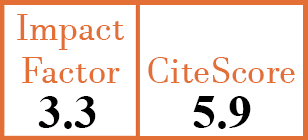Full Papers
Serum complement C3 strongly correlates with whole-body insulin sensitivity in rheumatoid arthritis
F. Ursini1, S. D'angelo2, E. Russo3, F. Arturi4, L. D'antona5, C. Bruno6, S. Naty7, G. De Sarro8, I. Olivieri9, R.D. Grembiale10
- Department of Health Sciences, University of Catanzaro “Magna Graecia”, Catanzaro, Italy. francesco.ursini@yahoo.it
- Rheumatology Department of Lucania, San Carlo Hospital of Potenza and Madonna delle Grazie Hospital of Matera, Potenza, Italy.
- Department of Health Sciences, University of Catanzaro “Magna Graecia”, Catanzaro, Italy.
- Department of Health Sciences, University of Catanzaro “Magna Graecia”, Catanzaro, Italy.
- Department of Health Sciences, University of Catanzaro “Magna Graecia”, Catanzaro, Italy.
- Department of Health Sciences, University of Catanzaro “Magna Graecia”, Catanzaro, Italy.
- Department of Health Sciences, University of Catanzaro “Magna Graecia”, Catanzaro, Italy.
- Department of Health Sciences, University of Catanzaro “Magna Graecia”, Catanzaro, Italy.
- Rheumatology Department of Lucania, San Carlo Hospital of Potenza and Madonna delle Grazie Hospital of Matera, Potenza, Italy.
- Department of Health Sciences, University of Catanzaro “Magna Graecia”, Catanzaro, Italy.
CER9100
2017 Vol.35, N°1
PI 0018, PF 0023
Full Papers
Free to view
(click on article PDF icon to read the article)
PMID: 27908300 [PubMed]
Received: 05/11/2015
Accepted : 29/02/2016
In Press: 27/10/2016
Published: 26/01/2017
Abstract
OBJECTIVES:
Rheumatoid arthritis (RA) is characterised by an excess of cardiovascular diseases (CVD) risk, attributable to a synergy between under-diagnosed traditional risk factors (i.e. insulin resistance) and inflammatory disease activity. The aim of the present study was to evaluate the correlation between inflammatory measures and insulin sensitivity in RA patients.
METHODS:
Forty non-diabetic RA patients (19 males) were recruited. All patients underwent anthropometric measurements, laboratory evaluation and oral glucose tolerance test (OGTT). Insulin sensitivity index (ISI) was calculated with the equation proposed by Matsuda et al., from dynamic values of glucose and insulin obtained during OGTT.
RESULTS:
In the univariate analysis, lnISI correlated inversely with age, BMI, waist circumference, sBP, ESR, lnCRP and complement C3, but not with disease duration, dBP or complement C4. In non-obese patients (BMI <30 kg/m2, n=28), only age, BMI, lnCRP and C3 maintained their correlation with lnISI. In a stepwise multiple regression using lnISI as the dependent variable and BMI, age, lnCRP and complement C3 as predictors, only BMI and C3 entered the equation and accounted for 38.2% of the variance in lnISI. In non-obese patients, only C3 entered the regression equation, accounting for 32.2% of the variance in lnISI. Using a ROC curve, we identified the best cut-off for complement C3 of 1.22 g/L that yielded a sensitivity of 67% and a specificity of 79% for classification of insulin resistant patients.
CONCLUSIONS:
In RA patients, complement C3 correlates strongly with insulin sensitivity, in both obese and non-obese individuals.


